Refine search
Actions for selected content:
23990 results in Ancient history
Frontmatter
-
- Book:
- Universe and Inner Self in Early Indian and Early Greek Thought
- Published by:
- Edinburgh University Press
- Published online:
- 01 December 2017
- Print publication:
- 11 July 2016, pp i-ii
-
- Chapter
- Export citation
3 - Harmonia and ṛtá
-
-
- Book:
- Universe and Inner Self in Early Indian and Early Greek Thought
- Published by:
- Edinburgh University Press
- Published online:
- 01 December 2017
- Print publication:
- 11 July 2016, pp 40-54
-
- Chapter
- Export citation
1 - The common origin approach to comparing Indian and Greek philosophy
-
-
- Book:
- Universe and Inner Self in Early Indian and Early Greek Thought
- Published by:
- Edinburgh University Press
- Published online:
- 01 December 2017
- Print publication:
- 11 July 2016, pp 12-27
-
- Chapter
- Export citation
16 - The justice of the Indians
-
-
- Book:
- Universe and Inner Self in Early Indian and Early Greek Thought
- Published by:
- Edinburgh University Press
- Published online:
- 01 December 2017
- Print publication:
- 11 July 2016, pp 251-264
-
- Chapter
- Export citation
Acknowledgements
-
- Book:
- Universe and Inner Self in Early Indian and Early Greek Thought
- Published by:
- Edinburgh University Press
- Published online:
- 01 December 2017
- Print publication:
- 11 July 2016, pp v-v
-
- Chapter
- Export citation
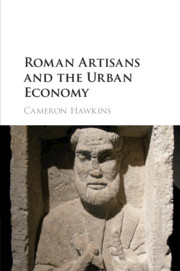
Roman Artisans and the Urban Economy
-
- Published online:
- 05 July 2016
- Print publication:
- 19 July 2016
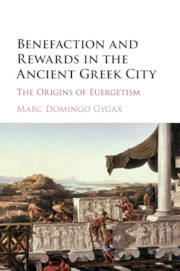
Benefaction and Rewards in the Ancient Greek City
- The Origins of Euergetism
-
- Published online:
- 05 July 2016
- Print publication:
- 04 July 2016
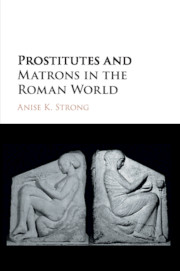
Prostitutes and Matrons in the Roman World
-
- Published online:
- 05 July 2016
- Print publication:
- 12 July 2016
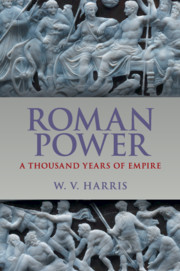
Roman Power
- A Thousand Years of Empire
-
- Published online:
- 05 July 2016
- Print publication:
- 14 July 2016
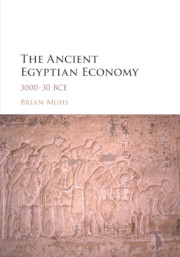
The Ancient Egyptian Economy
- 3000–30 BCE
-
- Published online:
- 05 July 2016
- Print publication:
- 02 August 2016
Preface
-
- Book:
- Benefaction and Rewards in the Ancient Greek City
- Published online:
- 05 July 2016
- Print publication:
- 04 July 2016, pp xi-xiii
-
- Chapter
- Export citation
Chapter 4 - Continuity andchange (2): citizens
-
- Book:
- Benefaction and Rewards in the Ancient Greek City
- Published online:
- 05 July 2016
- Print publication:
- 04 July 2016, pp 139-179
-
- Chapter
- Export citation
The index of inscriptions
-
- Book:
- Benefaction and Rewards in the Ancient Greek City
- Published online:
- 05 July 2016
- Print publication:
- 04 July 2016, pp 302-307
-
- Chapter
- Export citation
Chapter 2 - Creating an institution
-
- Book:
- Benefaction and Rewards in the Ancient Greek City
- Published online:
- 05 July 2016
- Print publication:
- 04 July 2016, pp 58-106
-
- Chapter
- Export citation
Contents
-
- Book:
- Benefaction and Rewards in the Ancient Greek City
- Published online:
- 05 July 2016
- Print publication:
- 04 July 2016, pp vii-x
-
- Chapter
- Export citation
Bibliography
-
- Book:
- Benefaction and Rewards in the Ancient Greek City
- Published online:
- 05 July 2016
- Print publication:
- 04 July 2016, pp 259-291
-
- Chapter
- Export citation
Chapter 3 - Continuity and change (1): foreignersand athletes
-
- Book:
- Benefaction and Rewards in the Ancient Greek City
- Published online:
- 05 July 2016
- Print publication:
- 04 July 2016, pp 107-138
-
- Chapter
- Export citation
Chapter 5 - The generalization of euergetism
-
- Book:
- Benefaction and Rewards in the Ancient Greek City
- Published online:
- 05 July 2016
- Print publication:
- 04 July 2016, pp 180-250
-
- Chapter
- Export citation
Acknowledgements
-
- Book:
- Benefaction and Rewards in the Ancient Greek City
- Published online:
- 05 July 2016
- Print publication:
- 04 July 2016, pp xiv-xiv
-
- Chapter
- Export citation
Glossary
-
- Book:
- Benefaction and Rewards in the Ancient Greek City
- Published online:
- 05 July 2016
- Print publication:
- 04 July 2016, pp xv-xvi
-
- Chapter
- Export citation
